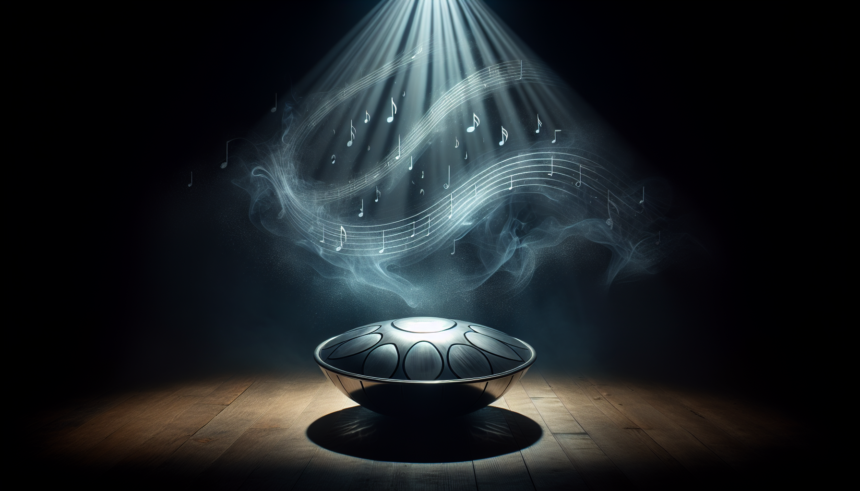<!DOCTYPE html>
<html lang="en">
<head>
<meta charset="UTF-8">
<meta name="viewport" content="width=device-width, initial-scale=1.0">
<title>Handpan Ghost Notes: Elevating Your Sound with Nuanced Rhythms</title>
<style>
body {
font-family: Arial, sans-serif;
line-height: 1.6;
margin: 20px;
padding: 20px;
background-color: #f4f4f4;
}
h1 {
color: #333;
}
p {
margin: 10px 0;
}
.faq-section {
margin-top: 50px;
}
.faq-section h2 {
color: #444;
}
.faq {
margin-bottom: 20px;
}
</style>
</head>
<body>
<h1>Handpan Ghost Notes: Elevating Your Sound with Nuanced Rhythms</h1>
<p>The handpan, a relatively new yet ethereal musical instrument, has intrigued musicians worldwide with its captivating sound. This enigmatic instrument, created in the early 2000s, has birthed new playing techniques and styles. Among these techniques, the use of "ghost notes" stands out as an advanced method to add depth and sophistication to handpan performances. Discovering how to effectively use ghost notes can significantly elevate your musical expressions.</p>
<h2>Understanding Ghost Notes in Music</h2>
<p>Before delving into their application on the handpan, it's essential to understand what ghost notes are. Essentially, ghost notes are softer, subtler strokes played between the main beats. They are often used in various instruments, including drums and guitar, to add complexity and texture to the rhythm without overpowering the primary melody.</p>
<p>In drum terminology, ghost notes are usually very light taps, barely audible, meant to create a sense of groove and continuity. In guitar, ghost notes are often muted plucks that add a rhythmic, percussive element. On the handpan, these techniques can be adapted to weave intricate, almost whispered layers of sound.</p>
<h2>The Role of Ghost Notes in Handpan Music</h2>
<p>Handpan playing is unique due to the harmonic richness and the meditative tones it produces. Incorporating ghost notes can introduce rhythmic intricacy and a smoother flow to your music. By filling in the spaces between the strong, resonant notes, ghost notes can make a handpan performance sound more cohesive and dynamic.</p>
<p>Ghost notes on a handpan are typically produced by lightly tapping on the note fields or the interstitial areas between them. The idea is to create a subtle sound that does not compete with the dominant notes but enhances the overall rhythmic pattern. This technique requires a delicate touch and precise timing.</p>
<h2>Techniques for Playing Ghost Notes on a Handpan</h2>
<p>Mastering ghost notes on a handpan involves a combination of finger control, timing, and rhythmic sensitivity. Here are some steps to get started:</p>
<h3>Finger Control and Positioning</h3>
<p>The fingers used to play ghost notes should be relaxed but controlled. Typically, the tips of your fingers, rather than the fleshy pads, are used for these light taps. Experiment with different fingers to find which ones give you the most control and subtlety. Additionally, positioning your hand over the note fields to allow quick transitions between ghost notes and primary strikes is crucial.</p>
<h3>Timing and Rhythm</h3>
<p>Ghost notes should blend smoothly into the overall rhythm of the piece. Practicing with a metronome can help you maintain the correct timing. Start by integrating ghost notes within simple rhythms and gradually increase the complexity as your confidence grows. Pay close attention to the spaces between strong beats, as these are where ghost notes are most effective.</p>
<h3>Dynamic Sensitivity</h3>
<p>Unlike primary notes, ghost notes should be played very softly. Work on varying the pressure and angle of your strikes to control the volume and tone. This dynamic sensitivity will allow you to balance the ghost notes against the louder, more resonant primary notes, ensuring they enhance rather than dominate the musical phrase.</p>
<h2>Practical Exercises for Ghost Notes</h2>
<p>To incorporate ghost notes into your playing, practice is key. Here are some exercises to help you develop this skill:</p>
<h3>Basic Rhythmic Patterns</h3>
<p>Start with simple rhythmic patterns, adding ghost notes between the primary beats. For example, play a basic 4/4 rhythm on one of the note fields, inserting ghost notes on the upbeats. This exercise helps you internalize the placement of ghost notes within a standard timing structure.</p>
<h3>Layering Techniques</h3>
<p>Layering involves playing ghost notes alongside primary notes to create a rich, textured sound. Practice by striking a primary note followed by a quick, soft ghost note. Over time, try to blend these layers seamlessly into your playing, ensuring that the ghost notes do not stand out but rather complement the primary tones.</p>
<h3>Improvisation</h3>
<p>Once you are comfortable with basic patterns and layering, try improvising with ghost notes. Play freely, exploring how ghost notes can add nuance and variation to your improvisations. Record your sessions to analyze how effectively you are integrating ghost notes and identify areas for improvement.</p>
<h2>Benefits of Incorporating Ghost Notes</h2>
<p>Adding ghost notes to your handpan repertoire offers several musical benefits:</p>
<h3>Enhanced Rhythmic Complexity</h3>
<p>Ghost notes introduce subtlety and complexity to your rhythms, making your playing sound more intricate and engaging. This added layer can captivate listeners and provide a richer musical experience.</p>
<h3>Smoother Transitions</h3>
<p>Ghost notes can act as connectors between primary beats, creating smoother transitions and a more flowing musical progression. This can be particularly effective in slower, more meditative pieces where maintaining a seamless flow is crucial.</p>
<h3>Expressive Range</h3>
<p>By mastering ghost notes, you expand your expressive range. The ability to play both strong, resonant notes and delicate, whispered ghost notes allows you to convey a broader spectrum of emotions and dynamics in your performances.</p>
<h2>Examples of Ghost Notes in Handpan Performances</h2>
<p>Many renowned handpan players incorporate ghost notes into their performances to create mesmerizing soundscapes. Listen to artists like David Kuckhermann, Manu Delago, and Kabecao, who masterfully use ghost notes to enhance their playing. Analyzing their techniques can provide valuable insights and inspiration for your own practice.</p>
<h2>Conclusion</h2>
<p>Ghost notes are a powerful tool in the handpan player's arsenal, offering a way to add depth, complexity, and fluidity to your music. By practicing finger control, timing, and dynamic sensitivity, you can master this technique and elevate your playing. Integrate ghost notes thoughtfully and creatively to enrich your handpan performances, captivating your listeners with nuanced rhythms and expressive soundscapes.</p>
<div class="faq-section">
<h2>FAQs</h2>
<div class="faq">
<h3>1. What are ghost notes in handpan playing?</h3>
<p>Ghost notes are subtle, soft taps played between primary beats. On a handpan, they are used to add rhythmic complexity and provide a smoother, more nuanced sound.</p>
</div>
<div class="faq">
<h3>2. How can I practice ghost notes on a handpan?</h3>
<p>Start with basic rhythmic patterns, incorporating ghost notes between primary beats, and gradually move to more complex rhythms. Use a metronome for timing and record your practice sessions to track your progress.</p>
</div>
<div class="faq">
<h3>3. Why are ghost notes important in handpan music?</h3>
<p>Ghost notes enhance rhythmic complexity, smooth transitions, and expand the expressive range of your playing. They help create a richer and more engaging musical experience.</p>
</div>
<div class="faq">
<h3>4. Can beginners learn to play ghost notes on a handpan?</h3>
<p>Yes, beginners can learn to play ghost notes with practice and patience. Start with simple exercises and gradually increase the complexity as you build confidence and control.</p>
</div>
<div class="faq">
<h3>5. Are there any specific handpan models better suited for playing ghost notes?</h3>
<p>While any handpan can be used to play ghost notes, instruments with clear, well-defined note fields and sensitive dynamics may make it easier to produce the subtle sounds required for ghost notes.</p>
</div>
</div>
</body>
</html>Handpan Ghost Notes: Elevating Your Sound with Nuanced Rhythms

Leave a comment




